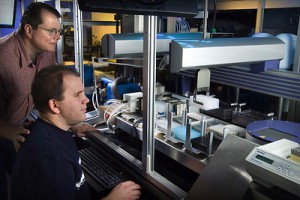Emergent business initiatives are steeped in continuous learning and discovery. The traditional business plan focuses more on planning with conventional models, where a well defined and executed plan is the key to success. If you’re thinking of writing a business plan, stop and consider from where success may come.
Not only did I experience the traditional business school classes, but furthermore wrote at least two significant (and traditional) business plans for emerging businesses. One of those businesses, a success, was profitable in spite of the business plan work. While there was some value in the exercise, in hindsight the time was poorly spent from an opportunity cost perspective – I could have been spending that time learning far more valuable information necessary for success. Why?
Traditional Business School Plans
The common business plan focuses on starting businesses in well established fields. For example if one is going to open a landscaping business, a restaurant, a flower shop.  All of these business are well established in the sense that we can look at 10 other landscaping companies and see how they operate (they are all fairly similar); it is clear what services have value – those are well established. More importantly the customer base is obvious as well. That is not to say that starting a traditional business is a sure thing – it isn’t – success requires perseverance, hard work, good customer skills and the ability to excel in a service offering.
All of these business are well established in the sense that we can look at 10 other landscaping companies and see how they operate (they are all fairly similar); it is clear what services have value – those are well established. More importantly the customer base is obvious as well. That is not to say that starting a traditional business is a sure thing – it isn’t – success requires perseverance, hard work, good customer skills and the ability to excel in a service offering.
Product or service startups in emerging markets bear little similarity to a traditional market. Their formation strategy may contain some similarities, yet the success strategy is altogether different. For the established market, a traditional business plan can be effective as success is driven more by covering well known bases and working hard. A traditional business plan is what software technologists call, the “waterfall” process – first one performs customer analysis, derives requirements, researches an approach, creates a design, implements the design, tests and executes in the market.
The waterfall process can be effective when one is creating something where little discovery is necessary but rather significant organization and execution drives success.
Emerging Markets & Ideas
Many product and service ideas in the Internet age are, by definition, emergent markets. Why? Let’s take an example.
Suppose you operate a successful antique store and decide you want to open online antique store. Is this a traditional business or an emergent market offering? While you may be selling antiques, there is little similarity between a brick and mortar antique shop and one online. The Internet market is far broader. You don’t interact with customers in person. Not even via phone, but often by e-mail. Customers can not touch the product. You represent your product by proxy through text and photo descriptions. Products must be shipped instead of taken away by customers. Supply issues are different – an online store may sell hundreds of an item that only tens would sell in a storefront. Not to mention that drop shipping from wholesalers may be preferable for certain products. Whereas the antique shop’s layout may be important to its ability to sell, what’s an antique shop online look like?
The trap to fall in is to believe that, because both businesses sell antiques, that they are similar businesses. They are in fact very different. Furthermore since the majority of antique sales are executed within brick & mortar, online antique stores are an emergent market by definition.
Emergent Market Businesses
If you are in an emergent market with a new product or service and success does not mimic the path of a traditional business plan, then what does it look like? And what do you do?
Product and service offerings in emergent markets exhibit far more uncertainty – who will actually buy the product or service? How will you reach them? What are they willing to actually pay for? Creating an offering with these unknowns is far closer to scientific process: form a hypothesis, create a test, perform the test, take measures, observe and learn. Then one takes what one learns and builds another test to learn more. In this way one either arrives to validating the hypothesis or one discovers new information which causes them to change the hypothesis and continue with tests to validate the new hypothesis.
Progressive Revelation and Refinement Through Learning
The above example describes a process of progressive revelation. In other words one can not know the answer until one walks the journey. Such problems are better suited to the analytic method than what is typically called the synthetic method, which starts from the known and work to the unknown (e.g. we build the antique store web site [known] and work toward the customers [unknown – who are they and what do they want from us and how do they want it?]).
 The key to success lies in learning and refinement. The analytic method starts with the unknown, treating constituent parts as hypothesis and executing tests to validate each hypothesis. The more one can learn and refine, the greater the opportunity to reach a proven set of hypothesis which become the basis for the emergent business. Unlike the waterfall process of a traditional business plan, what does the process for emerging markets look like?
The key to success lies in learning and refinement. The analytic method starts with the unknown, treating constituent parts as hypothesis and executing tests to validate each hypothesis. The more one can learn and refine, the greater the opportunity to reach a proven set of hypothesis which become the basis for the emergent business. Unlike the waterfall process of a traditional business plan, what does the process for emerging markets look like?
Emergent businesses can leverage R&D methods as used in scientific discovery. One hypothesizes that an idea could be profitable. But one does not know. A discovery and learning model is required to achieve success. Create an experiment, execute, measure, learn, refine or change context and repeat. The more times one can meaningfully test and learn, the wiser one becomes and the better the chance of an idea evolving into a sustainable business activity. It’s not about planning. It’s about learning.
For more on this subject, visit our methods articles.







You must be logged in to post a comment.